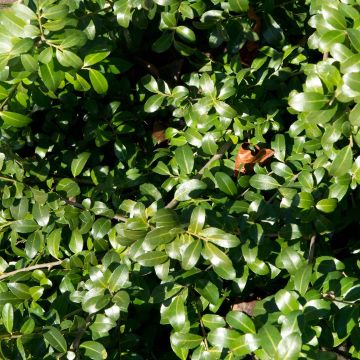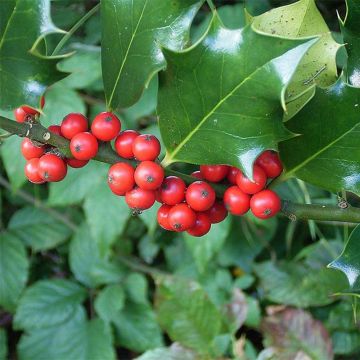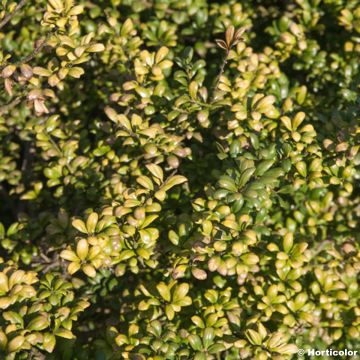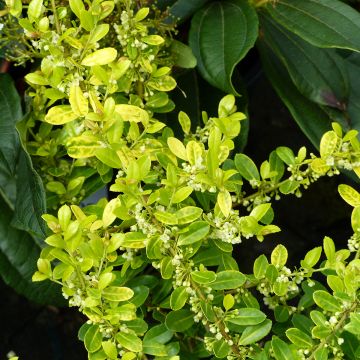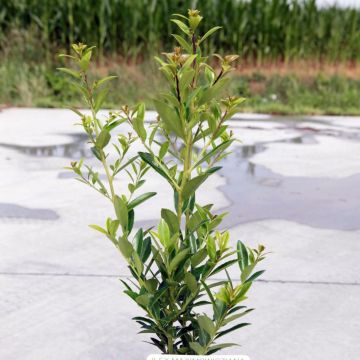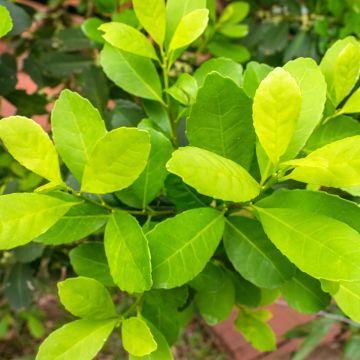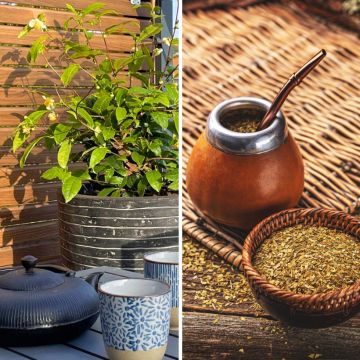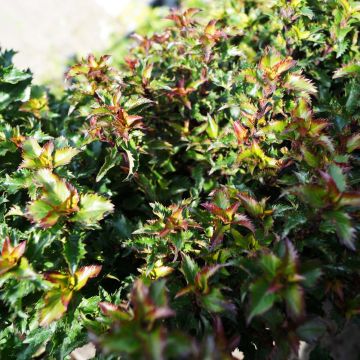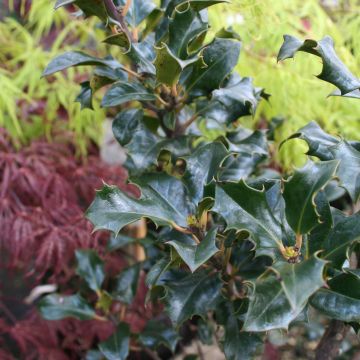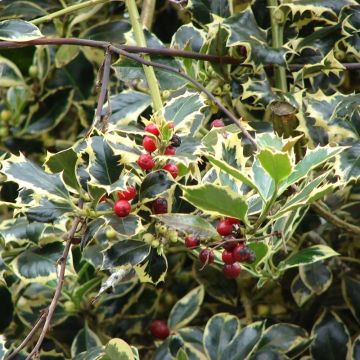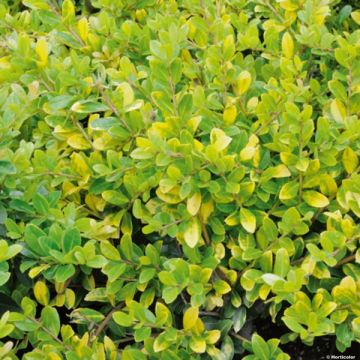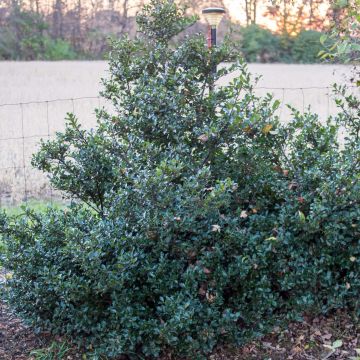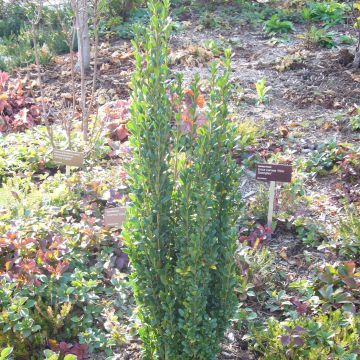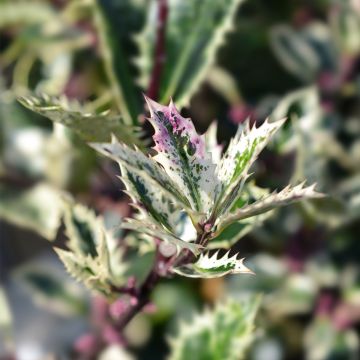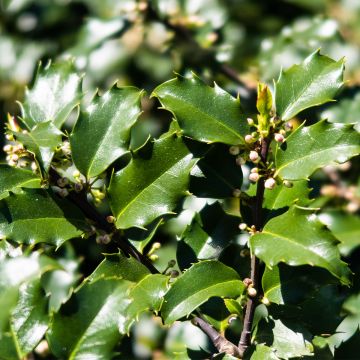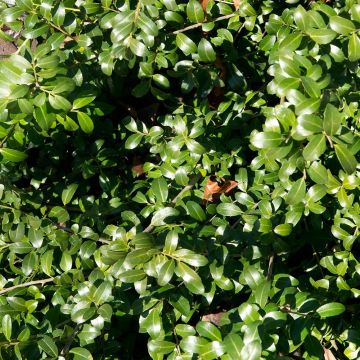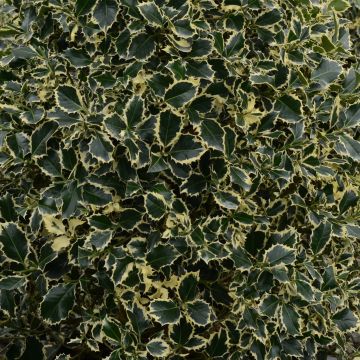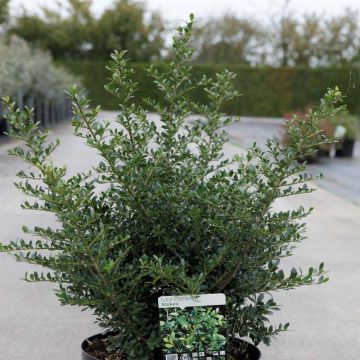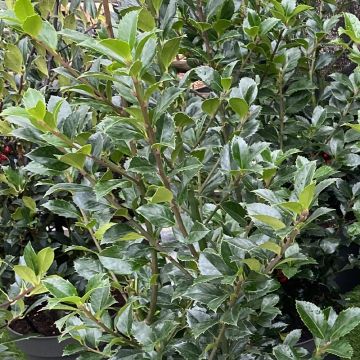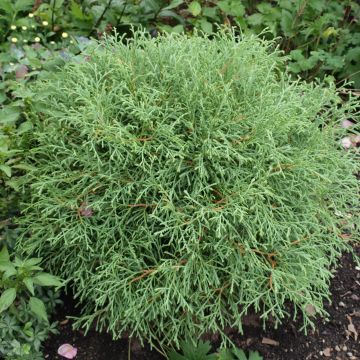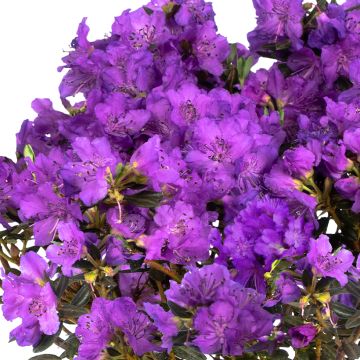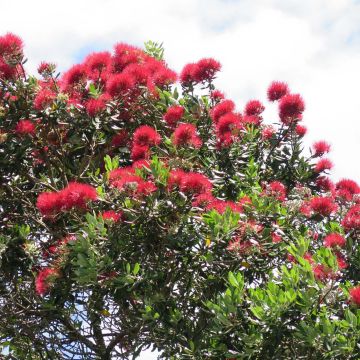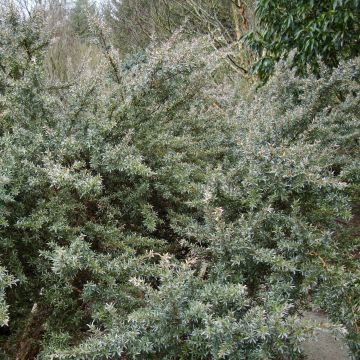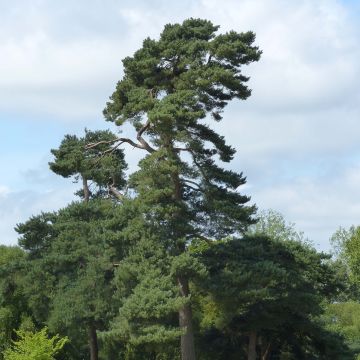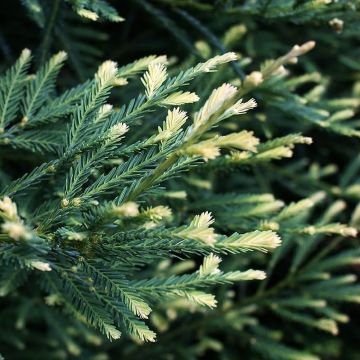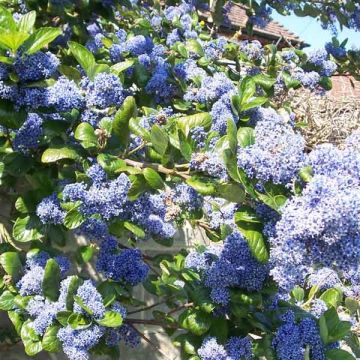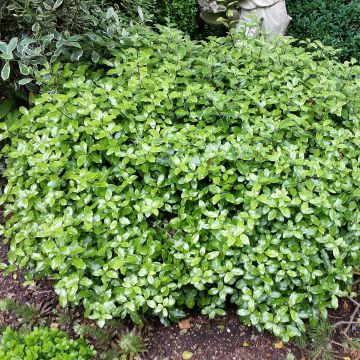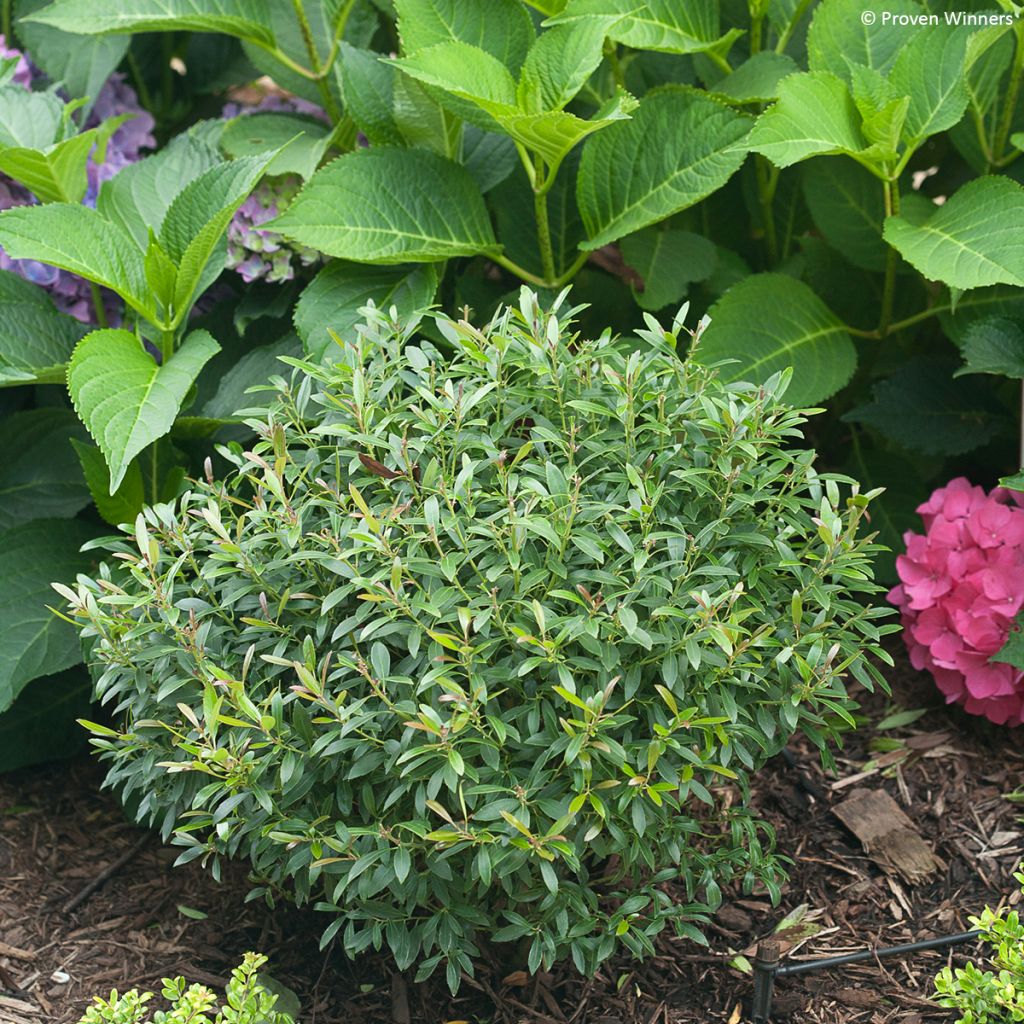

Ilex glabra Gem Box - Inkberry
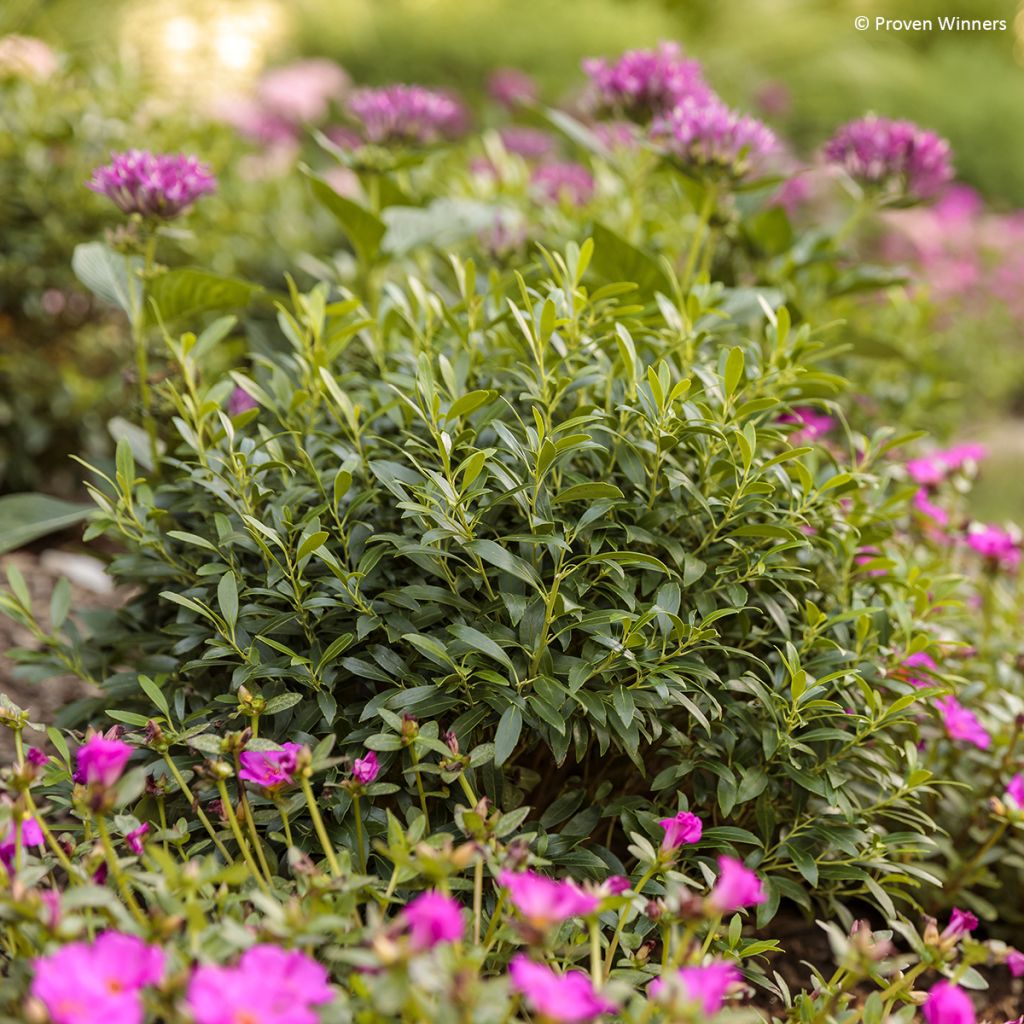

Ilex glabra Gem Box - Inkberry
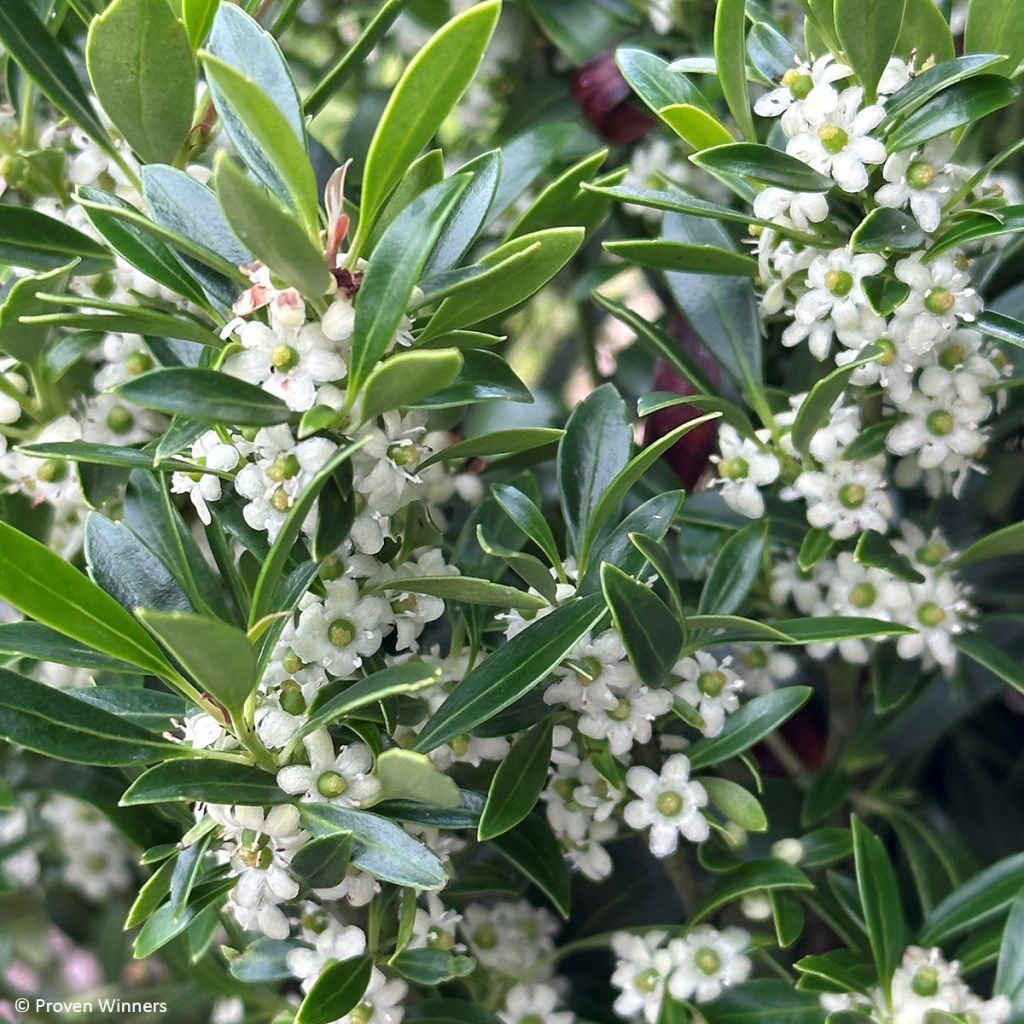

Ilex glabra Gem Box - Inkberry
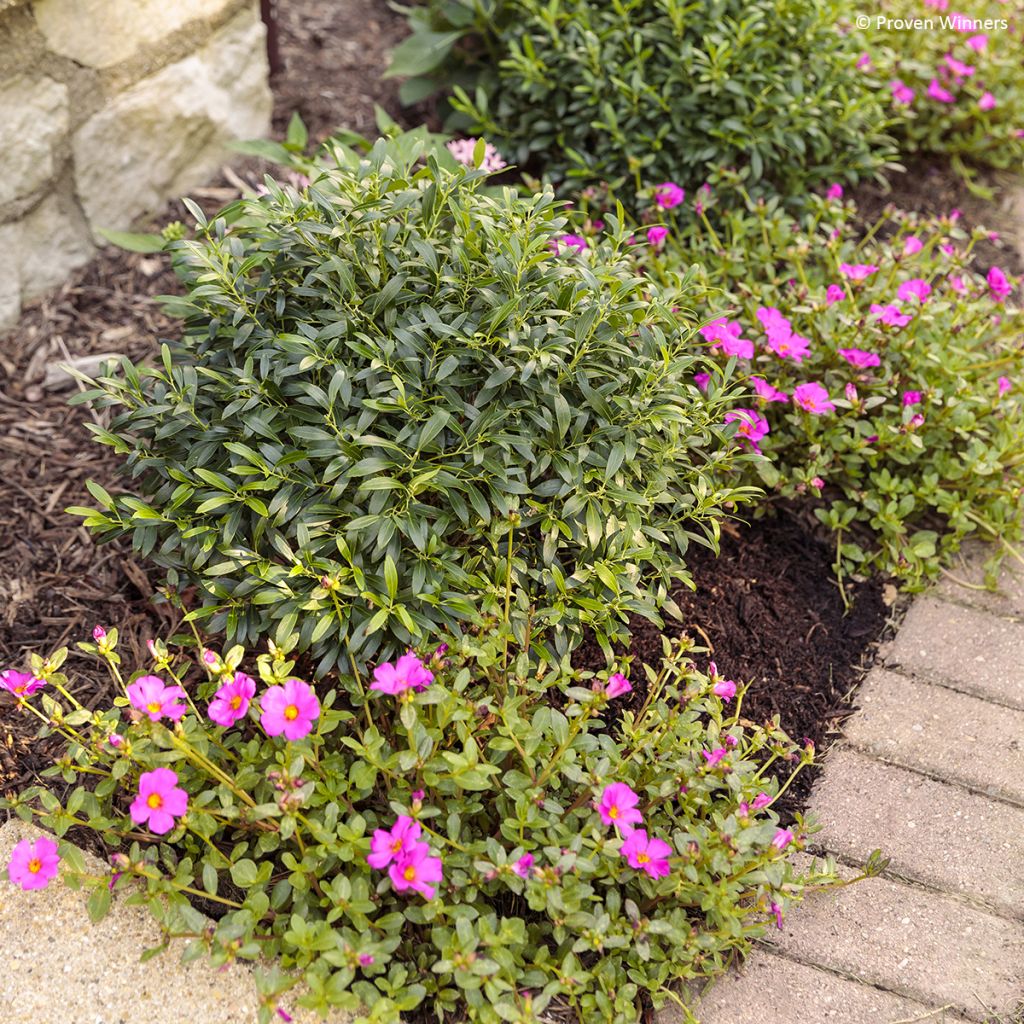

Ilex glabra Gem Box - Inkberry
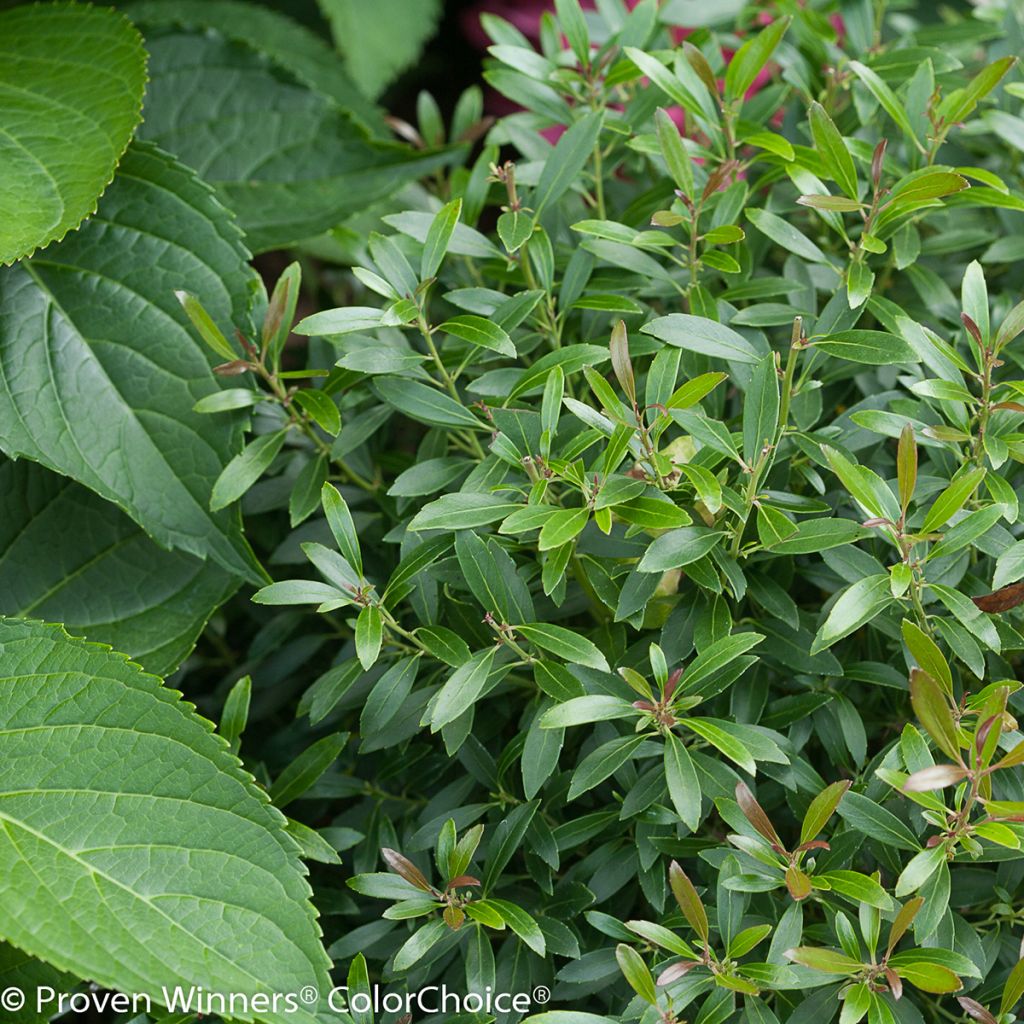

Ilex glabra Gem Box - Inkberry
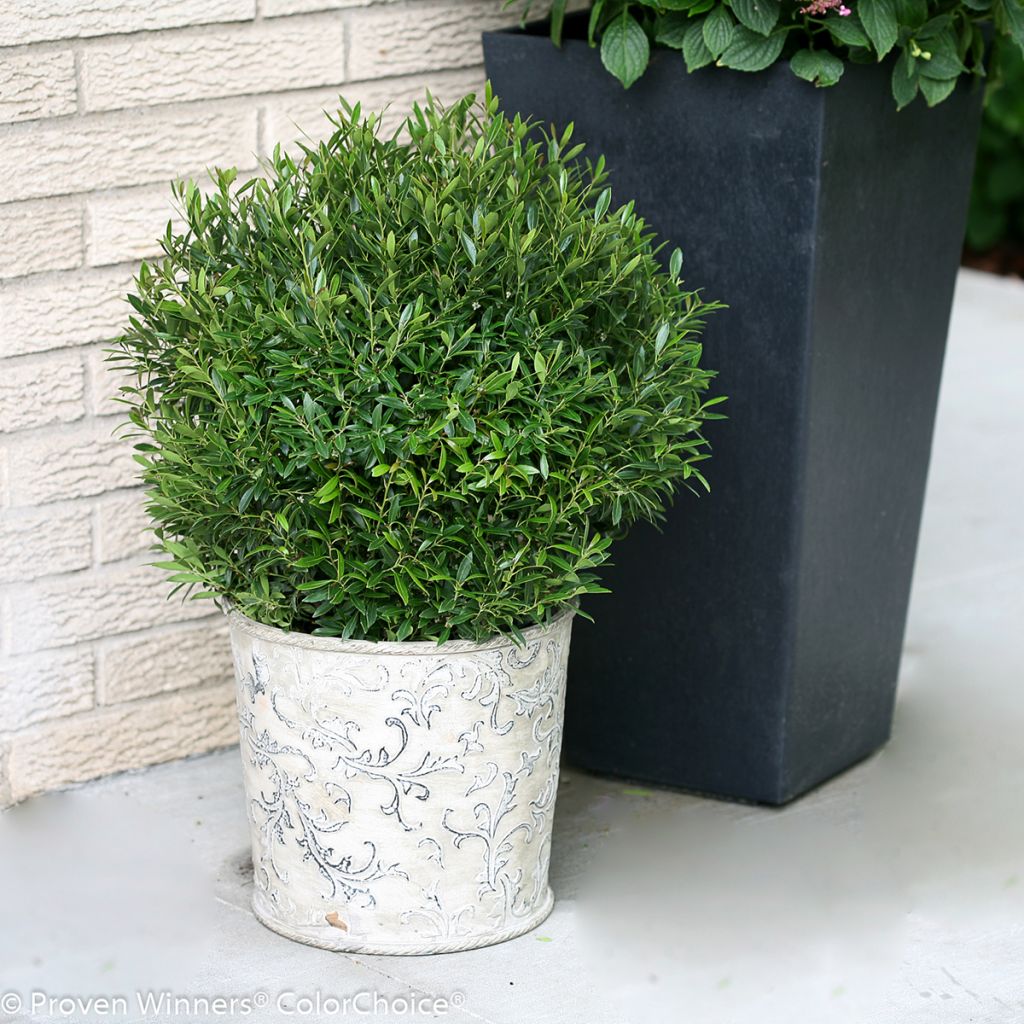

Ilex glabra Gem Box - Inkberry
Ilex glabra Gem Box - Inkberry
Ilex glabra Gem Box® 'SMNIGAB17'
Appalachian tea, evergreen winterberry, Canadian winterberry, gallberry, inkberry, dye-leaves
Why not try an alternative variety in stock?
View all →This plant carries a 24 months recovery warranty
More information
We guarantee the quality of our plants for a full growing cycle, and will replace at our expense any plant that fails to recover under normal climatic and planting conditions.
From €5.90 for pickup delivery and €6.90 for home delivery
Express home delivery from €8.90.
Does this plant fit my garden?
Set up your Plantfit profile →
Description
Ilex glabra Gem Box is a recent variety of Inkberry Holly, highly valued for its compactness and ornamental foliage. With its persistent, elongated, shiny dark green, densely arranged leaves, it can be a great alternative to Boxwood for topiaries or low hedges. In mid-spring, it produces a highly sought-after white flowering that is attractive to bees and adds to its decorative appeal. This extremely hardy, miniature shrub requires a non-calcareous soil, preferably acidic, and thrives in moist to wet conditions, growing well in full sun or partial shade.
Hollies belong to the Aquifoliaceae family and encompass over four hundred species of trees and shrubs spread across the globe, from tropical to temperate climates. Ilex glabra is an evergreen shrub native to the eastern part of North America, from Nova Scotia in Canada to Florida. Reaching a height of 3m, it grows in moist acidic soil, bearing narrow dark green leaves and flowering in June, followed by small black fruits.
Gem Box is a recent horticultural cultivar (since 2010) developed by American breeder Timothy D. Wood, on behalf of Spring Meadows Nurseries. It is protected in the market by two licenses, one in the United States (2017) and one in Europe (2022). With a slow growth rate and a significantly smaller size compared to the species, this variety typically reaches 1m in all directions after 10 years when planted in the ground. If left unpruned, its habit is relatively upright, forming more or less a cone shape. The plant has fine and narrow foliage, with beautiful dark green leaves that have a glossy surface, creating a stunning effect. They measure 3 to 4cm in length and 1cm in width, and unlike many other hollies, they are not prickly. Being evergreen, they provide ornamental interest all year round, especially in spring when the emerging shoots take on a brownish-orange colour. The shrub can produce suckers, so in late winter, it may be necessary to remove any shoots at its base...
In mid-spring, it produces small single flowers, approximately 1cm in diameter, composed of 6 white petals surrounding a green centre. These nectar-rich flowers attract bees, which in Georgia, South Carolina, and Florida produce a light berry honey, renowned in the United States. The pollinated flowers are followed by small shiny black fruits, which are inedible and can even be toxic to individuals sensitive to the saponins they contain. This extremely hardy (to -34°C or more) shrub thrives in full sun or partial shade in moist to wet soil, preferably acidic and rich in organic matter.
The Gem Box Holly can be left unpruned, but it performs best when trimmed into a low hedge or topiary, making it a great alternative to Boxwood, which is often attacked by Box Tree Moth caterpillars or affected by Cylindrocladium disease, leading to its decline. When trimmed into a ball shape, it looks perfect in a decorative pot to adorn a terrace which also allows you to avoid growing it in calcareous soil, which would cause chlorosis in the plant. You can also incorporate it into a flowerbed, alongside a Compact Bog Rosemary, a dwarf shrub with similar growing requirements that forms a spreading evergreen cushion and produces lovely small pink bells from April to June. The Ewa Mountain Laurel, a Mountain Laurel with stunning rose-coloured floral buds resembling meringues that open into fused corollas, would also make a great companion. To create a contrast in shape and colour with your small Holly, pair it with the Rheingold Western Arborvitae, a classic conifer known for its conical habit and golden foliage that always creates a striking effect when planted alongside darker foliage in a flowerbed.
Report an error about the product description
Ilex glabra Gem Box - Inkberry in pictures






Plant habit
Flowering
Foliage
Botanical data
Ilex
glabra
Gem Box® 'SMNIGAB17'
Aquifoliaceae
Appalachian tea, evergreen winterberry, Canadian winterberry, gallberry, inkberry, dye-leaves
Cultivar or hybrid
Other Ilex - Holly
Planting and care
To plant the Ilex glabra Gem Box, add potting soil with compost and incorporate it into the soil of your garden to slightly acidify the soil while increasing its water retention. If your soil contains active limestone, this holly bush will tend to develop chlorosis (the foliage gradually turns yellow around the leaf veins). In this case, add ericaceous soil and peat during planting, and mulch with pine bark that will gradually acidify the soil over the years. Nevertheless, in these unfavourable conditions, it is best to plant your holly bush in a container using ericaceous potting soil. In open ground, choose a semi-shaded location in a warm climate. Water during the first three years (preferably using non-limestone water), especially in the summer, in case of prolonged drought, to help the bush establish itself.
If you want to shape your holly bush, prune it every year in spring using hand shears instead of a motorised hedge trimmer. The cuts will be cleaner and more attractive. This holly bush is a good substitute for boxwood, which has been heavily attacked for years by boxwood moth. However, it can itself be attacked by holly leaf miner, white scale insects in spring, and mites and aphids in summer. Consider applying a preventive treatment at the beginning of the season.
Planting period
Intended location
Care
This item has not been reviewed yet - be the first to leave a review about it.
Evergreen shrubs
Haven't found what you were looking for?
Hardiness is the lowest winter temperature a plant can endure without suffering serious damage or even dying. However, hardiness is affected by location (a sheltered area, such as a patio), protection (winter cover) and soil type (hardiness is improved by well-drained soil).

Photo Sharing Terms & Conditions
In order to encourage gardeners to interact and share their experiences, Promesse de fleurs offers various media enabling content to be uploaded onto its Site - in particular via the ‘Photo sharing’ module.
The User agrees to refrain from:
- Posting any content that is illegal, prejudicial, insulting, racist, inciteful to hatred, revisionist, contrary to public decency, that infringes on privacy or on the privacy rights of third parties, in particular the publicity rights of persons and goods, intellectual property rights, or the right to privacy.
- Submitting content on behalf of a third party;
- Impersonate the identity of a third party and/or publish any personal information about a third party;
In general, the User undertakes to refrain from any unethical behaviour.
All Content (in particular text, comments, files, images, photos, videos, creative works, etc.), which may be subject to property or intellectual property rights, image or other private rights, shall remain the property of the User, subject to the limited rights granted by the terms of the licence granted by Promesse de fleurs as stated below. Users are at liberty to publish or not to publish such Content on the Site, notably via the ‘Photo Sharing’ facility, and accept that this Content shall be made public and freely accessible, notably on the Internet.
Users further acknowledge, undertake to have ,and guarantee that they hold all necessary rights and permissions to publish such material on the Site, in particular with regard to the legislation in force pertaining to any privacy, property, intellectual property, image, or contractual rights, or rights of any other nature. By publishing such Content on the Site, Users acknowledge accepting full liability as publishers of the Content within the meaning of the law, and grant Promesse de fleurs, free of charge, an inclusive, worldwide licence for the said Content for the entire duration of its publication, including all reproduction, representation, up/downloading, displaying, performing, transmission, and storage rights.
Users also grant permission for their name to be linked to the Content and accept that this link may not always be made available.
By engaging in posting material, Users consent to their Content becoming automatically accessible on the Internet, in particular on other sites and/or blogs and/or web pages of the Promesse de fleurs site, including in particular social pages and the Promesse de fleurs catalogue.
Users may secure the removal of entrusted content free of charge by issuing a simple request via our contact form.
The flowering period indicated on our website applies to countries and regions located in USDA zone 8 (France, the United Kingdom, Ireland, the Netherlands, etc.)
It will vary according to where you live:
- In zones 9 to 10 (Italy, Spain, Greece, etc.), flowering will occur about 2 to 4 weeks earlier.
- In zones 6 to 7 (Germany, Poland, Slovenia, and lower mountainous regions), flowering will be delayed by 2 to 3 weeks.
- In zone 5 (Central Europe, Scandinavia), blooming will be delayed by 3 to 5 weeks.
In temperate climates, pruning of spring-flowering shrubs (forsythia, spireas, etc.) should be done just after flowering.
Pruning of summer-flowering shrubs (Indian Lilac, Perovskia, etc.) can be done in winter or spring.
In cold regions as well as with frost-sensitive plants, avoid pruning too early when severe frosts may still occur.
The planting period indicated on our website applies to countries and regions located in USDA zone 8 (France, United Kingdom, Ireland, Netherlands).
It will vary according to where you live:
- In Mediterranean zones (Marseille, Madrid, Milan, etc.), autumn and winter are the best planting periods.
- In continental zones (Strasbourg, Munich, Vienna, etc.), delay planting by 2 to 3 weeks in spring and bring it forward by 2 to 4 weeks in autumn.
- In mountainous regions (the Alps, Pyrenees, Carpathians, etc.), it is best to plant in late spring (May-June) or late summer (August-September).
The harvesting period indicated on our website applies to countries and regions in USDA zone 8 (France, England, Ireland, the Netherlands).
In colder areas (Scandinavia, Poland, Austria...) fruit and vegetable harvests are likely to be delayed by 3-4 weeks.
In warmer areas (Italy, Spain, Greece, etc.), harvesting will probably take place earlier, depending on weather conditions.
The sowing periods indicated on our website apply to countries and regions within USDA Zone 8 (France, UK, Ireland, Netherlands).
In colder areas (Scandinavia, Poland, Austria...), delay any outdoor sowing by 3-4 weeks, or sow under glass.
In warmer climes (Italy, Spain, Greece, etc.), bring outdoor sowing forward by a few weeks.


































